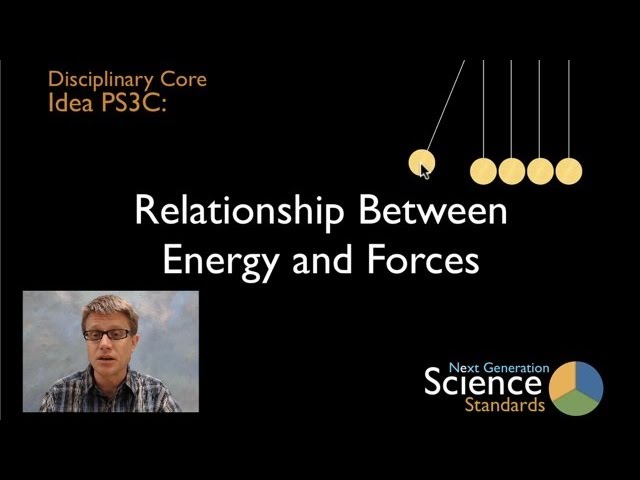PS2.C: Stability and Instability in Physical Systems
Why are some physical systems more stable than others?
K-12 Progressions
| K-2 | 3-5 | 6-8 | 9-12 |
|---|---|---|---|
| N/A | N/A | N/A | N/A |
Grade Band Endpoints for PS2.C
from A Framework for K-12 Science Education: Practices, Crosscutting Concepts, and Core Ideas (pages xxx)
By the end of grade 2. Whether an object stays still or moves often depends on the effects of multiple pushes and pulls on it (e.g., multiple players trying to pull an object in different directions). It is useful to investigate what pushes and pulls keep something in place (e.g., a ball on a slope, a ladder leaning on a wall) as well as what makes something change or move.
By the end of grade 5. A system can change as it moves in one direction (e.g., a ball rolling down a hill), shifts back and forth (e.g., a swinging pendulum), or goes through cyclical patterns (e.g., day and night). Examining how the forces on and within the system change as it moves can help to explain the system’s patterns of change.
A system can appear to be unchanging when processes within the system are occurring at opposite but equal rates (e.g., water behind a dam is at a constant height because water is flowing in at the same rate that water is flowing out). Changes can happen very quickly or very slowly and are sometimes hard to see (e.g., plant growth). Conditions and properties of the objects within a system affect how fast or slowly a process occurs (e.g., heat conduction rates).
By the end of grade 8. A stable system is one in which any small change results in forces that return the system to its prior state (e.g., a weight hanging from a string). A system can be static but unstable (e.g., a pencil standing on end). A system can be changing but have a stable repeating cycle of changes; such observed regular patterns allow predictions about the system’s future (e.g., Earth orbiting the sun). Many systems, both natural and engineered, rely on feedback mechanisms to maintain stability, but they can function only within a limited range of conditions. With no energy inputs, a system starting out in an unstable state will continue to change until it reaches a stable configuration (e.g., sand in an hourglass).
By the end of grade 12. Systems often change in predictable ways; understanding the forces that drive the transformations and cycles within a system, as well as the forces imposed on the system from the outside, helps predict its behavior under a variety of conditions.
When a system has a great number of component pieces, one may not be able to predict much about its precise future. For such systems (e.g., with very many colliding molecules), one can often predict average but not detailed properties and behaviors (e.g., average temperature, motion, and rates of chemical change but not the trajectories or other changes of particular molecules). Systems may evolve in unpredictable ways when the outcome depends sensitively on the starting condition and the starting condition cannot be specified precisely enough to distinguish between different possible outcomes.
Introduction to PS2.C
Events and processes in a system typically involve multiple interactions occurring simultaneously or in sequence. The system’s stability or instability and its rate of evolution depend on the balance or imbalance among these multiple effects.
A stable system is one in which the internal and external forces are such that any small change results in forces that return the system to its prior state (e.g., a weight hanging from a string). A system can be static but unstable, with any small change leading to forces that tend to increase that change (e.g., a ball at the top of a hill). A system can be changing but have a stable repeating cycle of changes, with regular patterns of change that allow predictions about the system’s future (e.g., Earth orbiting the sun). And a stable system can appear to be unchanging when flows or processes within it are going on at opposite but equal rates (e.g., water in a dam at a constant height but with water flowing in that offsets the water flowing out; a person maintaining steady weight but eating food, burning calories, and excreting waste).
Stability and instability in any system depend on the balance of competing effects. A steady state of a complex system can be maintained through a set of feedback mechanisms, but changes in conditions can move the system out of its range of stability (e.g., homeostasis breaks down at too high or too low a temperature). With no energy inputs, a system starting out in an unstable state will continue to change until it reaches a stable configuration (e.g., the temperatures of hot and cold objects in contact). Viewed at a given scale, stable systems may appear static or dynamic. Conditions and properties of the objects within a system affect the rates of energy transfer and thus how fast or slowly a process occurs (e.g., heat conduction, the diffusion of particles in a fluid).
When a system has a great number of component pieces, one may not be able to predict much about its precise future. For such systems (e.g., with very many colliding molecules), one can often predict average but not detailed properties and behaviors (e.g., average temperature, motion, and rates of chemical change but not the trajectories of particular molecules).
Performance Expectations Associated with PS2.C
K-2
n/a
3-5
n/a
MS
n/a
HS
n/a
VIDEOS
Next Generation Science Standards is a registered trademark of Achieve. Neither Achieve nor the lead states and partners that developed the Next Generation Science Standards were involved in the production of this product, and do not endorse it. Visit the official NGSS website.


